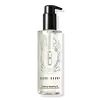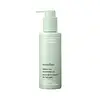What's inside
What's inside
 Key Ingredients
Key Ingredients

 Benefits
Benefits

 Concerns
Concerns

 Ingredients Side-by-side
Ingredients Side-by-side

Isopropyl Palmitate
EmollientPentaerythrityl Tetraethylhexanoate
EmollientPolybutene
PEG-20 Glyceryl Triisostearate
EmollientIsohexadecane
EmollientPEG-8 Diisostearate
EmulsifyingAleurites Moluccanus Seed Oil
Skin ConditioningPEG-12 Diisostearate
EmulsifyingTocopherol
AntioxidantLimnanthes Alba Seed Oil
Skin ConditioningOlea Europaea Fruit Oil
MaskingHelianthus Annuus Seed Oil
EmollientMethyldihydrojasmonate
MaskingSimmondsia Chinensis Seed Oil
EmollientJasminum Officinale Flower Wax
EmollientCalophyllum Inophyllum Seed Oil
AntimicrobialCamellia Japonica Seed Oil
EmollientLavandula Hybrida Oil
EmollientLavandula Angustifolia Oil
MaskingBisabolol
MaskingGlycerin
HumectantGlyceryl Laurate
EmollientWater
Skin ConditioningPentylene Glycol
Skin ConditioningDipentaerythrityl Tri-Polyhydroxystearate
EmollientLinalyl Acetate
MaskingTocopheryl Acetate
AntioxidantIsopropyl Palmitate, Pentaerythrityl Tetraethylhexanoate, Polybutene, PEG-20 Glyceryl Triisostearate, Isohexadecane, PEG-8 Diisostearate, Aleurites Moluccanus Seed Oil, PEG-12 Diisostearate, Tocopherol, Limnanthes Alba Seed Oil, Olea Europaea Fruit Oil, Helianthus Annuus Seed Oil, Methyldihydrojasmonate, Simmondsia Chinensis Seed Oil, Jasminum Officinale Flower Wax, Calophyllum Inophyllum Seed Oil, Camellia Japonica Seed Oil, Lavandula Hybrida Oil, Lavandula Angustifolia Oil, Bisabolol, Glycerin, Glyceryl Laurate, Water, Pentylene Glycol, Dipentaerythrityl Tri-Polyhydroxystearate, Linalyl Acetate, Tocopheryl Acetate
Triethylhexanoin
MaskingIsopropyl Palmitate
EmollientCaprylic/Capric Triglyceride
MaskingSorbeth-30 Tetraoleate
EmulsifyingCetyl Ethylhexanoate
EmollientOlea Europaea Fruit Oil
MaskingCocos Nucifera Oil
MaskingParfum
MaskingCoco-Caprylate/Caprate
EmollientLinalool
PerfumingLimonene
PerfumingHelianthus Annuus Seed Oil
EmollientPrunus Armeniaca Kernel Oil
MaskingSimmondsia Chinensis Seed Oil
EmollientOryza Sativa Bran Oil
EmollientCamellia Sinensis Seed Oil
HumectantPrunus Amygdalus Dulcis Oil
Skin ConditioningWater
Skin ConditioningPhytosteryl/Octyldodecyl Lauroyl Glutamate
Skin ConditioningButylene Glycol
HumectantPropanediol
Solvent1,2-Hexanediol
Skin ConditioningAcorus Calamus Root Extract
PerfumingEthylhexylglycerin
Skin ConditioningDisodium EDTA
Camellia Sinensis Leaf Extract
AntimicrobialTocopherol
AntioxidantTriethylhexanoin, Isopropyl Palmitate, Caprylic/Capric Triglyceride, Sorbeth-30 Tetraoleate, Cetyl Ethylhexanoate, Olea Europaea Fruit Oil, Cocos Nucifera Oil, Parfum, Coco-Caprylate/Caprate, Linalool, Limonene, Helianthus Annuus Seed Oil, Prunus Armeniaca Kernel Oil, Simmondsia Chinensis Seed Oil, Oryza Sativa Bran Oil, Camellia Sinensis Seed Oil, Prunus Amygdalus Dulcis Oil, Water, Phytosteryl/Octyldodecyl Lauroyl Glutamate, Butylene Glycol, Propanediol, 1,2-Hexanediol, Acorus Calamus Root Extract, Ethylhexylglycerin, Disodium EDTA, Camellia Sinensis Leaf Extract, Tocopherol
 Reviews
Reviews

Ingredients Explained
These ingredients are found in both products.
Ingredients higher up in an ingredient list are typically present in a larger amount.
Helianthus Annuus Seed Oil is the oil derived from the seeds of a Sunflower. Sunflower seed oil is non-fragrant. It is an emollient, meaning it helps to soften the skin.
Sunflower seed oil contains many fatty acids. The fatty acids found in sunflower seeds include (from highest amount to least): linoleic acid, myristic acid, palmitic acid, stearic acid, arachidic acid, oleic acid, and linolenic acid.
These fatty acids help the skin create ceramides. Ceramides play a role in repairing the skin barrier.
Helianthus Annuus Seed Oil helps moisturize the skin. This in turn helps the skin look more rejuvenated and smoother.
Sunflowers are rich in vitamin E.
Historians believe Indigenous cultures of North America domesticated sunflowers before corn. Thus they relied on sunflower oil for a variety of uses. One such use is moisturizing skin and hair.
Sunflower seed oil may not be fungal acne safe. We recommend speaking with a professional if you have any concerns.
Learn more about Helianthus Annuus Seed OilIsopropyl Palmitate is a texture enhancer and emollient. It is an ester of isopropyl alcohol and palmitic acid.
Palmitates are emollients. Emollients help keep your skin soft and smooth by creating a barrier that traps moisture in.
When added to cosmetics, Isopropyl Palmitate creates a silky texture and improves spreadability.
Isopropyl Palmitate may not be fungal acne safe. It can worsen acne prone skin.
Learn more about Isopropyl PalmitateOlea Europaea Fruit Oil is the fixed oil obtained from the ripe fruit of the Olive. In other words - olive oil.
The primary contents of olive oil are glycerides of the fatty acids linoleic, oleic and palmitic.
Olive oil also contains antioxidants such as Vitamin E. Antioxidants may help reduce signs of aging by fighting unstable free-radical molecules. It also contains Vitamins A (retinol), D, and K.
The squalene in olive oil makes it a great emollient. Emollients help soothe and soften your skin by trapping moisture in. This makes olive oil a great skin moisturizer.
Studies show olive oil to have antibacterial and antifungal properties in low concentrations. Another study found olive oil irritated sensitive oily skin. We always recommend speaking with a professional about using this ingredient in your routine.
Due to the fatty acid content, this ingredient may not be fungal-acne safe.
Learn more about Olea Europaea Fruit OilThis oil comes from the seeds of the desert shrub called Jojoba. It is more commonly known as jojoba oil, a non-comedogenic oil.
Jojoba oil does not contain fragrance and has many fatty-acids, making it a great soothing ingredient.
It also contains Vitamin E, a great moisturizing ingredient. Vitamin E is also an antioxidant and protects your skin against oxidative damage.
This ingredient humectant properties, meaning it helps draw moisture from the air. This helps keep your skin hydrated.
While jojoba has antibacterial properties, it is only able to kill some strains of bacteria.
Studies also show it helps in wound healing. In fact, Indigenous cultures have used jojoba as a moisturizer and to help treat burns for centuries.
Fun fact: Jojoba oil similar to natural human skin sebum, so it has a great effect on dry skin. It is also promising with helping to regulate sebum production.
Due to its fatty acid content, Jojoba oil may not be fungal acne safe. We recommend speaking with a professional if you have any concerns.
Learn more about Simmondsia Chinensis Seed OilTocopherol (also known as Vitamin E) is a common antioxidant used to help protect the skin from free-radicals and strengthen the skin barrier. It's also fat soluble - this means our skin is great at absorbing it.
Vitamin E also helps keep your natural skin lipids healthy. Your lipid skin barrier naturally consists of lipids, ceramides, and fatty acids. Vitamin E offers extra protection for your skin’s lipid barrier, keeping your skin healthy and nourished.
Another benefit is a bit of UV protection. Vitamin E helps reduce the damage caused by UVB rays. (It should not replace your sunscreen). Combining it with Vitamin C can decrease sunburned cells and hyperpigmentation after UV exposure.
You might have noticed Vitamin E + C often paired together. This is because it is great at stabilizing Vitamin C. Using the two together helps increase the effectiveness of both ingredients.
There are often claims that Vitamin E can reduce/prevent scarring, but these claims haven't been confirmed by scientific research.
Learn more about TocopherolWater. It's the most common cosmetic ingredient of all. You'll usually see it at the top of ingredient lists, meaning that it makes up the largest part of the product.
So why is it so popular? Water most often acts as a solvent - this means that it helps dissolve other ingredients into the formulation.
You'll also recognize water as that liquid we all need to stay alive. If you see this, drink a glass of water. Stay hydrated!
Learn more about Water